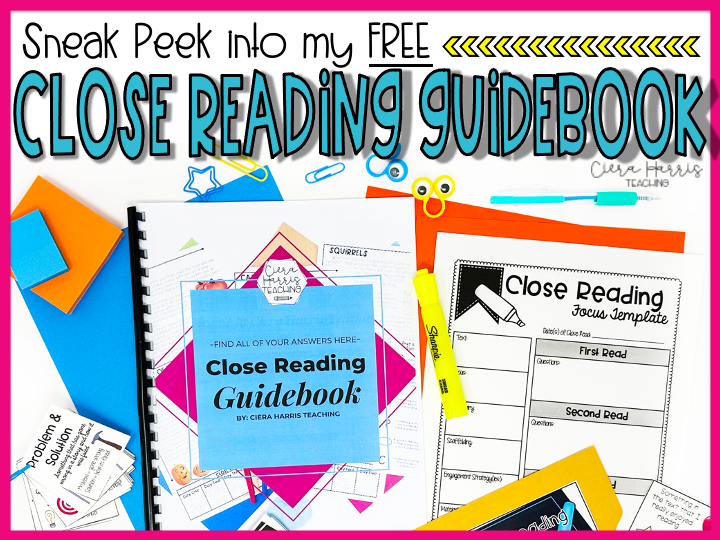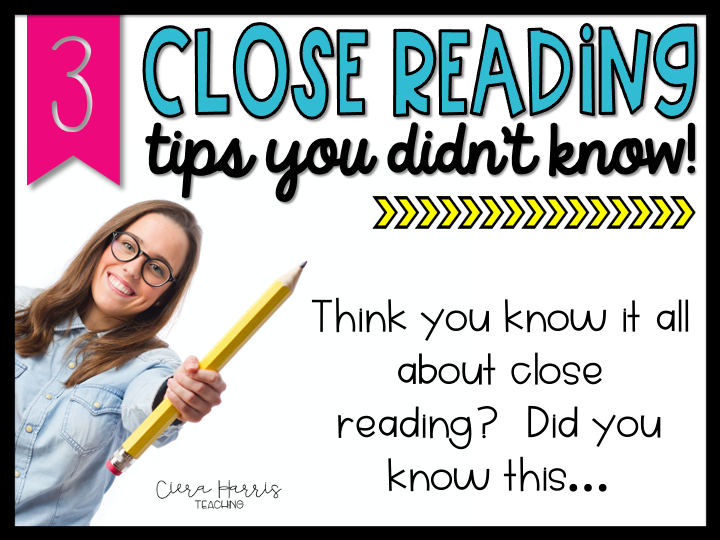Integration of subjects is always important. The more we can show students how concepts are related to one another, the more they buy in. The connection between reading and math, however, is much stronger than that, especially when it comes to solving word problems! Students who struggle in reading typically struggle solving word problems due to their inability to comprehend. I’ve got a solution that I think you’ll love to try! In my classroom, we used the close reading strategy in math to help all students really understand word problems and solve them to the best of their ability. Let’s check out how you can use close reading in your math block too!

Want to watch the video instead? Check it out below! Make sure to subscribe to get updates on all new content!
What is Close Reading?
Before we jump into using close reading in math, I want to make sure we’re all on the same page in understanding what close reading truly is. Close reading is the intentional rereading of a text. Typically, a close read has three different reads, each with a specific purpose. If you want to know more about close reading and how to use it in your reading block, make sure to check out my blog post all about close reading in a snap! I won’t go into detail here about what the purpose is for each read in reading because it will be different for what you do in math!
Using Close Reading to Solve Word Problems
The close reading strategy for math is definitely one to introduce early on in the year. This gives students a chance to make this strategy more of a habit. The more they use it, the better they will get at doing the three reads on their word problems more naturally. You will want these steps to become engrained into their problem solving routine.
The math close read goes like this. Again, there are three intentional reads of the math story problem. Each read has a purpose (different than the true purposes of close reading) but still intentional purposes that the students need to understand. Here are the steps using close reading in math:

First Read:
- Read the word problem and then cover it up completely
- Visualize what you read and see what you can remember
- Ask yourself one question about something you’re unsure of
In the first read, students are simply reading the word problem for the first time. I tell my students that I don’t expect them to remember the entire problem. We aren’t here to memorize. You’re here to listen to the story and begin to understand what’s happening in the story. Who are the characters? What are the characters doing? What question is being asked of you? I have them think back through the details of the word problem and visualize what is happening. Using the visualization strategy is super important here! Finally, I ask them to think of a detail from the story that they don’t remember. This becomes a question they need to ask themselves. And this question then becomes the purpose for the 2nd read!
Second Read:
- Read the word problem again
- Use CUBE while you read to analyze the information given in the word problem
- Answer the question from read #1
- Make a prediction about how you will solve the problem
In the second read, students are now diving deeper into the story problem. First, I have them read the problem again, this time using their pencil for the FIRST time. (I don’t let them use it on the first read) While they read, they use the CUBE strategy to annotate the text. They circle their numbers they find, underline the facts that correspond with the numbers, box in the question, and eliminate extra and unneeded information. However, if you use a different strategy that is similar to CUBE, feel free to use what you’re already comfortable with!
After the students use CUBE to annotate the text, they then answer the question that they asked from read #1. Finally, they make a quick prediction about how they think they are going to solve the word problem. Here they decide on a strategy or an operation that they think they will use. This prediction then becomes the purpose for the final read!
Third Read:
- Read the word problem for the final time
- Confirm your prediction
- Solve the problem
In the third read, students will read the word problem for the final time. Here they are looking for text evidence to prove how they will solve the problem. Are they adding? Subtracting? Two step word problem? They have to confirm their prediction and prove it using evidence as well as show their thinking on their paper (draw it out, underline signal words, etc). This is where the solving of the problem takes place! I talk with my students about how it’s okay to make a prediction in the 2nd read and then find out in the 3rd read that you were wrong. That’s what the 3rd read is for! Then, model this for your students to let them see how you can quickly judge how you think the problem will be solved but then after you read again, you find evidence to support solving it a different way.

Want to try the strategy? Download your FREE printables to get started! Just enter your email below and they are all yours!
This strategy is a wonderful strategy to try, especially for your struggling readers! Many times, students who struggle in reading will struggle in math due to the amount of reading that takes place. Using the close reading strategy in math helps to give them a concrete step by step strategy to use to understand the ‘story’ behind the story problem and to figure out what is going on and what needs to be done to answer the given question. Many of my struggling readers expressed how much this strategy has helped them! Grab your free printables above to help you get started!
If you want to save this post for later, pin the image below!






